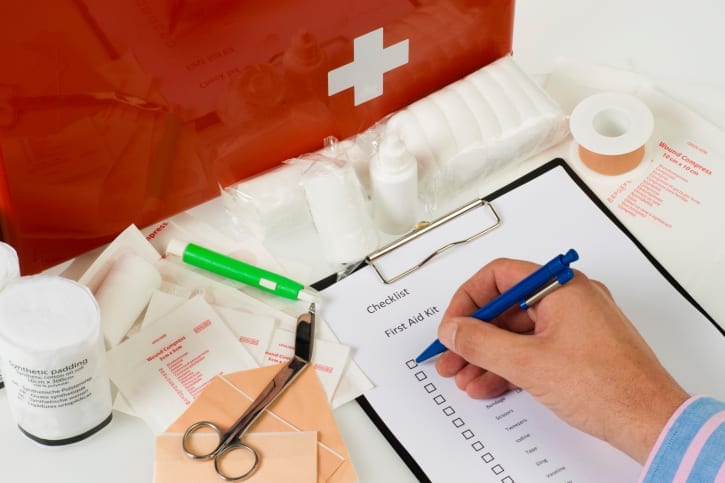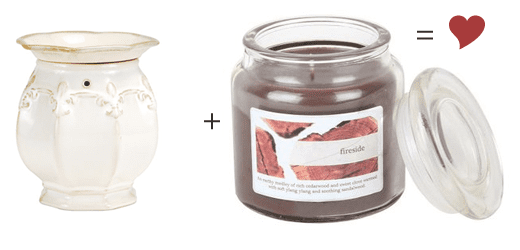Hurricane season in the Atlantic begins June 1st and ends November 30th. The Eastern Pacific hurricane season begins May 15th and also ends November 30th.
With the hurricane season in full force, I decided to put together a post giving you some tips and information that could help you and your family. From first aid kits to types of contacts you should have on hand, it’s better to be safe than sorry.
Gather Information
Know if you live in an evacuation area. Assess your risks and know your home’s vulnerability to storm surge, flooding and wind. Understand National Weather Service forecast products and especially the meaning of NWS watches and warnings.
Contact your local National Weather Service office and local government/emergency management office. Find out what type of emergencies could occur and how you should respond.
Contacts
Keep a list of contact information for reference.
- Local Emergency Management Office
- County Law Enforcement
- County Public Safety Fire/Rescue
- State, County and City/Town Government
- Local Hospitals
- Local Utilities
- Local American Red Cross
- Local TV Stations
- Local Radio Stations
- Your Property Insurance Agent
Plan & Take Action
Everyone needs to be prepared for the unexpected. Your friends and family may not be together when disaster strikes. How will you find each other? Will you know if your children or parents are safe? You may have to evacuate or be confined to your home. What will you do if water, gas, electricity or phone services are shut off?
Supplies Kit
Put together a basic disaster supplies kit and consider storage locations for different situations. Help community members do the same.
A basic emergency supply kit could include the following recommended items:
- Water, one gallon of water per person per day for at least three days, for drinking and sanitation
- Food, at least a three-day supply of non-perishable food
- Battery-powered or hand crank radio and a NOAA Weather Radio with tone alert and extra batteries for both
- Flashlight and extra batteries
- First aid kit
- Whistle to signal for help
- Dust mask to help filter contaminated air and plastic sheeting and duct tape to shelter-in-place
- Moist towelettes, garbage bags and plastic ties for personal sanitation
- Wrench or pliers to turn off utilities
- Manual can opener for food
- Local maps
- Cell phone with chargers, inverter or solar charger
Once you have gathered the supplies for a basic emergency kit, you may want to consider adding the following items:
- Prescription medications and glasses
- Infant formula and diapers
- Pet food and extra water for your pet
- Cash or traveler’s checks and change
- Important family documents such as copies of insurance policies, identification and bank account records in a waterproof, portable container. You can use the Emergency Financial First Aid Kit – EFFAK (PDF – 977Kb) developed by Operation Hope, FEMA and Citizen Corps to help you organize your information.
- Emergency reference material such as a first aid book or free information from this web site. (See Publications)
- Sleeping bag or warm blanket for each person. Consider additional bedding if you live in a cold-weather climate.
- Complete change of clothing including a long sleeved shirt, long pants and sturdy shoes. Consider additional clothing if you live in a cold-weather climate.
- Household chlorine bleach and medicine dropper – When diluted, nine parts water to one part bleach, bleach can be used as a disinfectant. Or in an emergency, you can use it to treat water by using 16 drops of regular household liquid bleach per gallon of water. Do not use scented, color safe or bleaches with added cleaners.
- Fire extinguisher
- Matches in a waterproof container
- Feminine supplies and personal hygiene items
- Mess kits, paper cups, plates, paper towels and plastic utensils
- Paper and pencil
- Books, games, puzzles or other activities for children
First Aid Kit
In any emergency a family member or you yourself may suffer an injury. If you have these basic first aid supplies you are better prepared to help your loved ones when they are hurt.
Knowing how to treat minor injuries can make a difference in an emergency. You may consider taking a first aid class, but simply having the following things can help you stop bleeding, prevent infection and assist in decontamination.
- Two pairs of Latex or other sterile gloves if you are allergic to Latex
- Sterile dressings to stop bleeding
- Cleansing agent/soap and antibiotic towelettes
- Antibiotic ointment
- Burn ointment
- Adhesive bandages in a variety of sizes
- Eye wash solution to flush the eyes or as general decontaminant
- Thermometer
- Prescription medications you take every day such as insulin, heart medicine and asthma inhalers. You should periodically rotate medicines to account for expiration dates.
- Prescribed medical supplies such as glucose and blood pressure monitoring equipment and supplies
Non-prescription drugs:
- Aspirin or non-aspirin pain reliever
- Anti-diarrhea medication
- Antacid
- Laxative
Other first aid supplies:
- Scissors
- Tweezers
- Tube of petroleum jelly or other lubricant
Unique Supply Kit Items
Remember the unique needs of your family members, including growing children, when making your emergency supply kit and family emergency plan.
For Baby:
- Formula
- Diapers
- Bottles
- Powdered milk
- Medications
- Moist towelettes
- Diaper rash ointment
For more information about the care and feeding of infants and young children during an emergency, visit the California Dept. of Public Health website.
For Adults:
- Denture needs
- Contact lenses and supplies
- Extra eye glasses
Ask your doctor about storing prescription medications such as heart and high blood pressure medication, insulin and other prescription drugs.
If you live in a cold climate, you must think about warmth. It is possible that you will not have heat. Think about your clothing and bedding supplies. Be sure to include one complete change of clothing and shoes per person, including:
- Jacket or coat
- Long pants
- Long sleeve shirt
Maintaining Your Kit
Just as important as putting your supplies together is maintaining them so they are safe to use when needed. Here are some tips to keep your supplies ready and in good condition:
- Keep canned food in a cool, dry place.
- Store boxed food in tightly closed plastic or metal containers to protect from pests and to extend its shelf life.
- Throw out any canned good that becomes swollen, dented or corroded.
- Use foods before they go bad and replace them with fresh supplies.
- Place new items at the back of the storage area and older ones in the front.
- Change stored food and water supplies every six months. Be sure to write the date you store it on all containers.
- Re-think your needs every year and update your kit as your family’s needs change.
- Keep items in airtight plastic bags and put your entire disaster supplies kit in one or two easy-to-carry containers, such as an unused trashcan, camping backpack or duffel bag.
Wireless Emergency Alerts
Wireless Emergency Alerts (WEA) send free informational text messages to WEA-enabled cell phones within range of an imminent and dangerous local situation, severe weather event, or AMBER emergency.
- The WEA notification is designed to get your attention and notify you with a unique sound and vibration. When you receive an alert, take action and check local broadcasts for more information.
- Public safety officials use WEA to send you essential information whenever you are near the location of a life-threatening event.
- You do not need to register to receive WEA notifications. You will automatically receive alerts if you have WEA-capable phone and your wireless carrier participates in the program.
- To find out if your mobile device is capable of receiving WEA alerts, contact your mobile device carrier or visit CTIA The Wireless Association.
- If you choose not to receive WEA messages, you can adjust the alert settings on your mobile device. You can opt-out of receiving imminent hazard and AMBER alerts, but you cannot opt-out of Presidential alerts.
Download the Family Emergency Plan PDF
Modern Day Moms
Modern Day Moms is an award-winning publication centered around motherhood that is real and unfiltered. Basically, we don't sugarcoat anything and aren't afraid to tell you the truth. Let's be best friends, we will make you feel more normal.





Leave a Comment